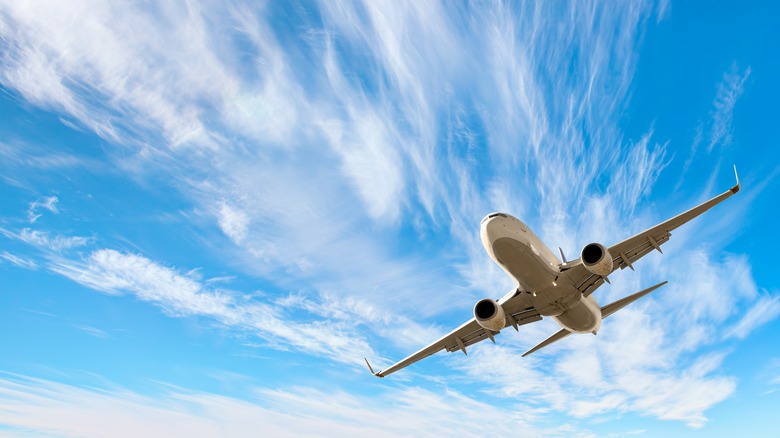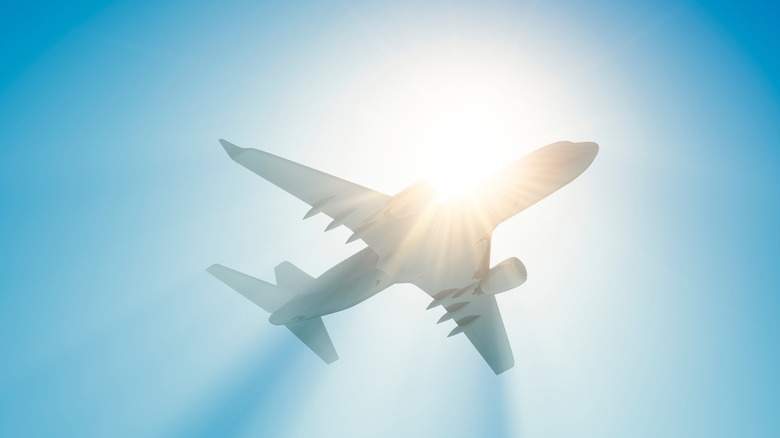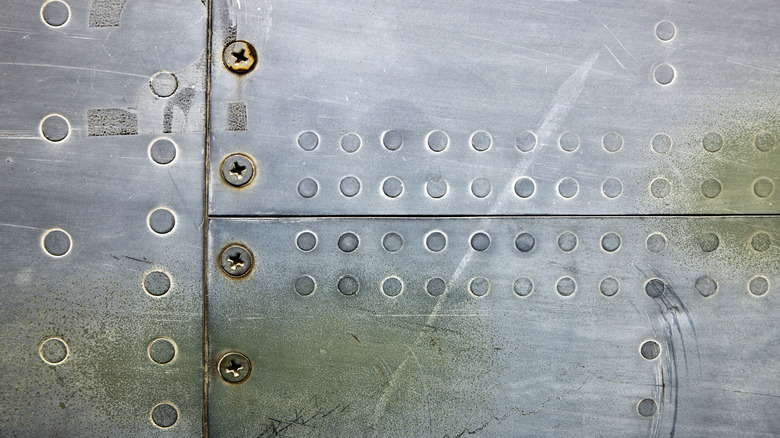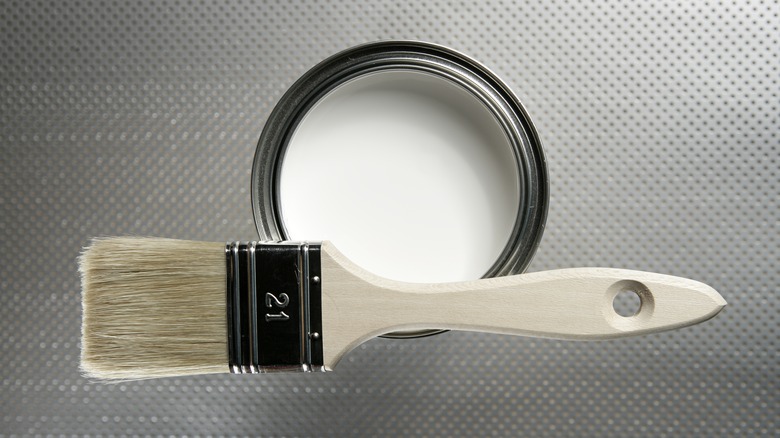Why Commercial Airplanes Are Usually Painted White
Whenever you hear the distinct hum of a commercial airplane passing overhead, jetstreams trailing behind, you'll probably look up out of curiosity. Nine times out of ten, the plane you see flying by will be painted a bright, stark white, either in its entirety or with only a handful of colored decals like the Union Jack painted on the rear of the British Royal Family's plane. Commercial airplanes have been painted primarily white as far back as the 1970s, with the introduction of the "Euro-White" color scheme.
Interestingly, though, airplanes aren't just painted white as a fashion statement. Prior to the introduction of Euro-White, most commercial airplanes didn't have any paint at all – they'd fly around with their shiny metal bodies on display. The changeover to white paint was made because, as it happens, painting an airplane white actually brings with it a handful of practical aviation benefits, including better heat repulsion, ease of maintenance, increased visibility, and of course, maintaining the company budget.
White paint reflects heat
The first and foremost reason that commercial airplanes are painted primarily white is because pure white shades are the best at reflecting the heat of the sun. You know how sitting in a closed, powered-off car on a hot day is dangerous because it gets hot enough to adversely affect your health? Imagine sitting in an unpainted metal plane with no air conditioning, above the cloud line, getting a direct blast of constant heat for hours on end. The passengers and crew would fry like pork sausages.
By painting an airplane stark white, you give it additional resistance to the sun's rays. Much like how wearing a white t-shirt on a hot day keeps you relatively cooler than wearing a black t-shirt, painting the whole craft white helps to reflect the bulk of the sun's heat. This, in turn, helps to reduce the ambient temperature inside the cabin, as well as reduce the rate of damage incurred by the plane's body due to solar radiation exposure.
It's easier to spot damage on a white plane and for birds to avoid them
One of the nice things about white paint on an airplane is that, obviously, white is a highly visible, contrasting color compared to the blue hue of the sky or the black pavement of the airport tarmac. By utilizing contrasting colors, a plane becomes much more visible while in flight. Not only that, though, any imperfections or damage on the plane's body also become notably more visible before and after a flight.
As a plane needs to undergo a comprehensive battery of checks before a flight, it makes the engineering crews' jobs easier if any imperfections are starker against the plane's body. With pure white paint, even a small, dark scuff on one of the wings becomes easier to find and remedy with maintenance or a comprehensive cleaning. This helps the crew to keep the plane in top shape, which is better for the plane's longevity and the safety of its passengers.
Speaking of safety, painting a plane white also helps keep someone else safe: local bird populations. Bird strikes on commercial airplanes are a recurring problem around the world, with thousands of birds colliding with planes yearly in the United States alone. By using highly contrasting white paint on a plane, it makes it easier for local birds to spot them in the air and move out of their flight path.
White paint is long-lasting and readily available
Even putting aside all of the heat-repelling and visibility benefits that come with painting a plane white, the simple fact of the matter is that white paint is the most economical option for airplane livery. Painting an entire plane, even a single color, can be a costly endeavor, and if you tried to use some kind of wacky, obscure shade, it's going to cost the airline entirely too much money. White paint, on the other hand, is the most common, readily available kind of paint there is. You could pick up a plane's worth of plain white paint for a fraction of the cost of just about any other shade.
As an added bonus, the lack of complicated shades in white paint means that it generally lasts longer than other colors. A combination of weather conditions and heat exposure can cause exotic colors to fade over time, ruining whatever color coordination you were going for. White paint takes much longer than usual to fade thanks to its natural resistance, which means less time and money spent on regular repainting.



